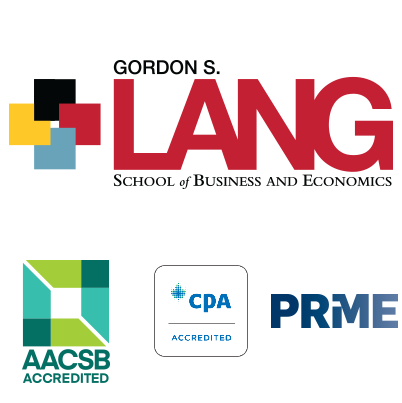
Professor Ilias Tsiakas is a professor and the Lang Chair in Finance in the Department of Economics and Finance. His research focuses on asset pricing, international finance, financial econometrics, and climate finance.
What is the overarching focus of your research program?
The focus of my research is understanding financial markets from the point of view of an investor (rather than the point of view of a corporation). This is the field of finance that is known as asset pricing. Using empirical methods based on large datasets, my research aims at improving our assessment of the risk-return tradeoff of various asset classes: stocks, bonds, currencies, cryptocurrencies, commodities, etc. For example, here are three classic questions addressed by my research in various contexts: why do some assets perform better than other ones? Can we predict the future performance of certain assets? What are the best ways to build optimal portfolios? In short, the main objective of my research is to provide new insights about the workings of financial markets, which are ideally reported in high-quality publications, funded by prestigious research grants, provide opportunities for graduate supervision and contribute to the delivery of improved courses.
Briefly describe a research problem or issue you are currently investigating? What questions or challenges are you hoping to address?
One research problem that I am currently investigating is the dividend disconnect in evaluating the performance of investments. This is joint work with Jordi Mondria from the University of Toronto and Michael Di Carlo, who recently graduated from our PhD program under my supervision. The dividend disconnect is a behavioural bias of investors against dividends. There is strong evidence that investors perceive gains and losses to be driven primarily by capital gains (i.e., price changes) and tend to ignore dividends in assessing performance. This creates a disconnect between capital gains and dividends.
The dividend disconnect goes against standard financial theory, which is based on the idea that investors care about returns but are indifferent about whether they receive them through capital gains or dividends. As a result, all models we use in finance for evaluating asset performance make no distinction about whether the market return is due to capital gains or the dividend yield.
In this paper, we find that it makes a big difference to look at the dividend yield as a separate component of the market return. We first build a theoretical model, which shows that the behavioural bias of investors to ignore dividends can justify the high predictive ability of the dividend yield for future returns. Then we examine the full cross-section of US stock returns to show that the empirical evidence supports our theoretical result. In short, separating the capital gains from the dividend yield for the market portfolio has fundamental implications for the way we evaluate investments and this is a new insight in financial research.
Who is the target audience? Why is your research important to this audience? Why does it matter?
The target audience of my research is primarily the group of my academic peers and graduate students. My main objective is to produce research with a high impact in the academic community. One way to measure this impact is by counting the citations received by publications.
Overall, I would say that academic research matters because it typically deals with important issues, provides novel perspectives, produces comprehensive analysis, uses state-of-the-art methods and is subject to thorough peer review. For these reasons, the intellectual depth and rigour of academic research is hard to replicate outside academia.
Having said that, however, in finance the gap between academic research and industry practice is small and getting smaller. Most of our academic ideas and findings have direct applications in financial practice. There is a two-way exchange of people and ideas between academia and industry. Lots of PhDs or Professors go to the industry and lots of issues that practitioners care about inform academic research. For example, my last three PhD students were all recruited by financial corporations to work on quantitative financial analysis. In short, there is a high level of interaction between academic researchers and industry practitioners in finance.
What comes next?
My objective remains the same: produce the best possible research, supervise graduate students and be an effective teacher. In the near future, I expect that I will continue to conduct research on the following topics:
- Designing better measures of risk that work well in assessing investments in both developed and emerging economies.
- Explore the market conditions under which asset pricing anomalies work well (such as size, value and momentum across stocks).
- Understanding the complexities of trading FX swaps for the purpose of interest rate speculation and tax planning.
- Evaluating the effect of carbon emissions on the financial performance of firms.
- Examine the role of order flow in predicting cryptocurrency returns.
